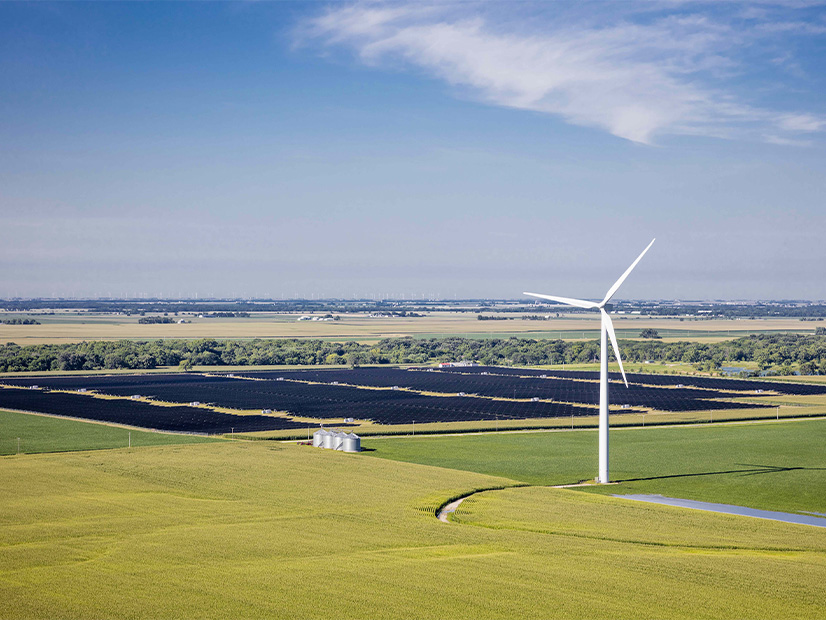
Steady past growth and a strong demand outlook for renewables in the U.S. are revealing the weak points in the sector’s supply chain.
While the U.S. hit renewable energy deployment records in each of the last three years, that growth was contingent on an import-heavy supply chain, Raymond Long, senior vice president of external affairs for Clearway Energy said Wednesday.
And the outlook for a domestic supply of renewable energy components isn’t getting better. For example, of the estimated 25 GW of solar that is slated to come online in 2022, only 5 GW worth of solar panels will come from U.S. manufacturing, Long said.
“We still have no choice but to source panels from overseas and import them to the U.S.,” he said during the American Clean Power Association’s CLEANPOWER 2021 conference in Salt Lake City.
Under the Biden administration’s target to reach net-zero energy by 2035, Long said the solar industry needs to deploy 75-100 GW every year for the next 15 years.
“As exciting as that is for the industry … it’s really a daunting thing to think about how we are going to meet that with pressure to buy American and not to import panels,” he said.
Trump-era tariffs designed to bolster U.S. manufacturing have not been effective, and the Build Back Better Act includes targeted incentives to grow domestic renewables supply. But Long said it’s not possible to overturn the current supply chain paradigm with “the flip of a switch.”
“You have to find the right ways to do it and give it the right amount of time,” he said.
The pandemic has highlighted unforeseen glitches across global supply chains, while other solar-specific challenges also cropped up this year. In August, an anonymous group of solar manufacturers asked the U.S. Department of Commerce to investigate Chinese solar panel companies for potentially avoiding anti-dumping duties. The department has since declined to launch an investigation, but Long said the industry is still “dealing with the impacts” of the petition.
And in June, the Department of Homeland Security began detaining silica-based product imports from China-based Hoshine Silicon and its subsidiaries over human rights concerns. Silica is used in solar panel production.
The review process for detained shipments is “hampered,” Long said, and the situation needs to improve to avoid project delays next year.
“We’ve heard from other developers in the sector that solar panels aren’t making it to projects that are under construction now,” he said. “In 2022, with all the projects that are being built, if things stay the way they are, panels will not make it to those projects on time.”
The department’s order applies to materials, such as polysilicon, that are derived from silica-based products. China is responsible for 80% of the world’s polysilicon production, said Josh Skogen, senior vice president of procurement at AES. The energy transition, he said during the conference, is really a transition from a fuel-intensive system to a minerals-intensive system.
Minerals needed for solar, wind and storage components, for example, come from a small number of countries with a concentrated production rate. U.S. reliance on more renewable technologies is introducing new trade restrictions, trade patterns and geopolitical concerns, Skogen said.
“With that concentration, if there is a trade restriction or a geopolitical concern or a pandemic, like we’ve experienced, the volatility and the supply of that feedstock, and the upstream effects that has on the construction of new projects, is exacerbated,” he said.
Flexibility is Key
Current supply chain challenges have been “overwhelming,” Art Fletcher, executive vice president of construction for Invenergy, said during the conference.
While the company has managed those challenges, he said, they’ve been a “significant strain” on resources at an “all-new level.”
Staying nimble is a necessity for executing projects now, Fletcher said.
“Previously, we would know [two years out] that we were using a certain wind turbine or a certain battery package or a certain solar package,” he said. “Unfortunately, with the supply chain challenges we’ve had, there’s a great uncertainty in what we might actually be able to source either domestically or internationally.”
The company must plan projects differently from an engineering perspective.
“We have to go back sometimes a year to what we were working on and reevaluate what that technology is and how it applies to our land, our permits and everything else,” he said.
On the supplier side, turbine manufacturer Vestas has been equally challenged by global supply chain issues, and it also relied on flexibility to make it through.
Vestas’ global supply chain allows the company to shift between countries under new tariffs or when geopolitical changes occur that it did not anticipate, said Noga Vilan, director of supply chain planning for Vestas Americas.
The supply chain lessons of the last two years will allow Vestas to improve itself in the next decade, she said, adding that the company’s ability to do that will be tied to project volume.
At Vestas, the long-term vision to build value in the industry is to create a “whole ecosystem supply chain,” Vilan said.
That means the company will execute wind turbine installations while also ensuring local roads are better and communities have more jobs, she said.
“We truly believe that creating renewable energy is not just having cleaner energy and cheaper electricity when you turn on the lights,” she said. “It’s creating meaningful life, and we can do much more than what we’re doing today.”

